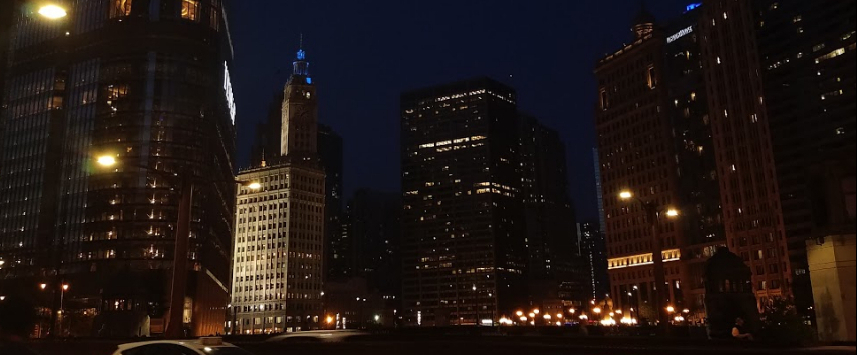Not a Social Experiment
This post was written by Olivia Price.
A few weeks ago, two Instagram accounts, called the @npu_conservativechristians and the @conservativevikings, were created. The @npu_conservativechristian account was made first, and within 12 hours managed to put out multiple posts and facilitate discussion that was racist, misogynistic, and a hindrance to creating inclusive spaces on campus. A few days later, the @conservativevikings account cropped up and had a similar impact.
The content of both accounts claimed to be simple political ideology and an effort at facilitating discourse, but that is not what it was. For example, the @npuconservativechristians account, in one of their posts, both celebrated Thomas Jefferson and claimed they affirmed diversity of thought. To base their platform’s “inclusivity” on the reputation of someone who enslaved Black people, shows that there is a drastic misunderstanding about how to create inclusive spaces for diverse discourse. To do so, the reality of the past first needs to be addressed.
Later, in the comment section, the account asked someone to justify how white, rich, men don’t deal with oppression. When someone gave their life experience as an example of white male privilege, they refused to accept it. This retort continued to show a lack of understanding—particularly about what the accounts thought they meant when they announced they would sanction diverse thought.
More than that though, when the white, male, privilege protected by these posts was challenged, the account got defensive. This defensiveness shows that the makers of these accounts have yet to understand the reality of white privilege. Robin DiAngelo, in her 2011 article “White Fragility”, says that it’s actually normal for white people to get defensive in this way when their racism is called out or responded to by the people it continues to oppress. She explains that white people have a low tolerance for “racial stress” because institutions and structures in the U.S. allow white people to live without having to, “build the cognitive or affective skills or develop the stamina that would allow for constructive engagement across racial divides” (57). This lack of stamina to communicate constructively about white privilege, and race in general, she calls white fragility. She continues on, saying that, “...they [white people] confuse not understanding with not agreeing. This racial arrogance, coupled with the need for racial comfort, also has whites insisting that people of color explain white racism in the ‘right’ way” (61).
The @npu_conservativechristians account fully lived out this concept. First, it got defensive and tried to make people of color defend their life experience; then it misequated equity for people of color to be an ideology opposite to conservatism; finally, it told the people of color, who shared their experience with them in an effort to explain white, male privilege, that their answer wasn’t what they were looking for. The lack of understanding about how whiteness was still being preserved as the dominant narrative in their discussion platform shows a misunderstanding about what “diversity of thought” actually looks like. The racism in the accounts’ posts, followed by the inability to communicate about it due to white fragility, explains why the makers of this account did not grasp why their account was harmful.
Because of this white fragility, coupled with internalized toxic masculinity, it is unsurprising, yet still deeply hurtful, that the maker(s) of this account thought they were just running a “social experiment” (or in the case of the @conservativevikings a conservative fan page), as they called it before it was deleted. But these accounts were not just an innocent social experiment, and to call them that is belittling to the legitimate trauma their words could inflict. To call them an innocent social experiment or fan page ignores the U.S. history of white supremacy, and also ignores the profound, hegemonic roles that whiteness, and white maleness, still hold today.
In addition, to call themselves a conservative account, in an attempt to attribute all of their ideas to that ideology, permits them and other onlookers to classify any challenge of their power as liberal, and therefore something they “disagree” with. In doing so, the voices which challenge it are belittled as political banter, and the people who speak are again denied agency to voice their experience as humans. America's inequalities transcend party affiliation, and the experiences of people of color must be recognized as doing so also.
Inclusive discussion is key to breaking down these hegemonies, but a space for that was not what was provided by either of these accounts, no matter what was written in their bios. This account was not facilitating discussion, but reciting an internalized monologue. A monologue internalized because the institutions in our society teach little, white, straight, boys to memorize it: you’re in charge—don’t let anyone take your power.
The way these accounts conducted themselves was not truly in an effort to facilitate inclusive discussion, but to preserve the idea of white, male hegemony. In order to truly engage in an egalitarian discourse, as they stated they desired to do, requires that one truly understands their own level of privilege in this social hegemony, and practices equity through the amount they speak. Neither of these accounts understood that in an inclusive discussion, white maleness needs to have a smaller voice in order to rectify the minimization of the voices of people of color in general, but more specifically, women of color.
To truly create inclusive discourse, and actually work to make a world where all people have equal social privilege, the maker(s) of these accounts would benefit from practicing the ideas of Iris Marion Young, the social justice philosopher. She suggests that people take collective responsibility to assess how they themselves can help break down institutions of injustice. To find what your level of responsibility is in this collective, she says to consider your: power, privilege, how the issue does or doesn’t affect you (interest), and the people you can rally to stand with you(collective ability). The greater the amount of these one has, the greater their responsibility is to act. So in conclusion, the people these accounts most protected, the racially, gendered socio-economically privileged, have a pretty big social responsibility to acknowledge their privilege, minimize their white fragility, and help to dismantle systemic oppression.
References:
“White Fragility”, Robin DiAngelo, 2011.
Responsibility for Justice, Iris Marion Young, 2011







